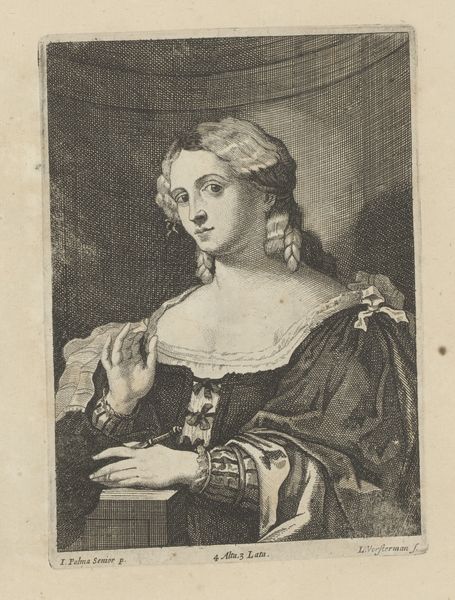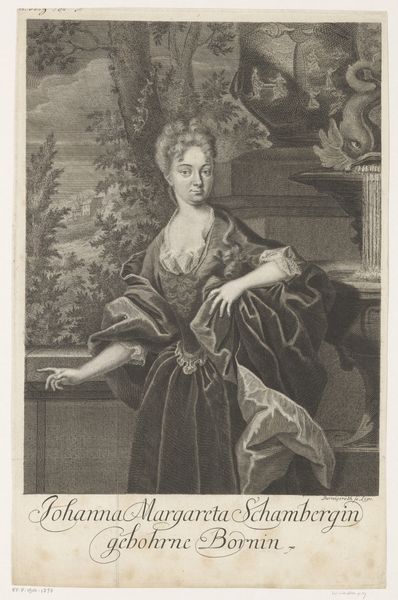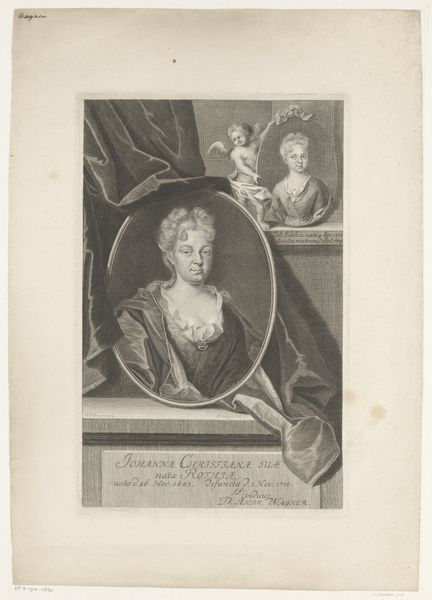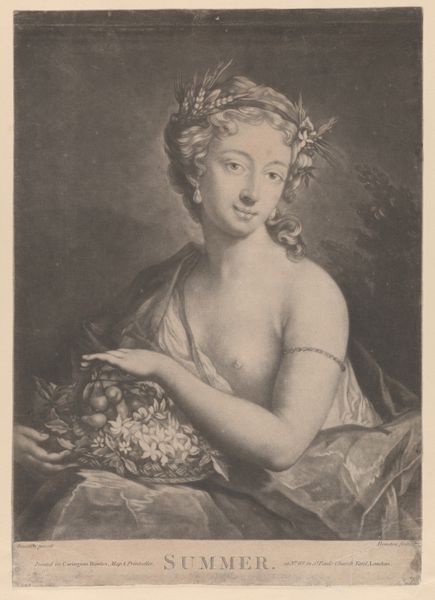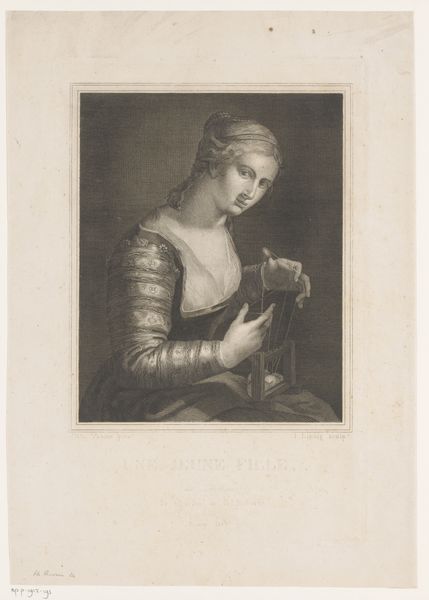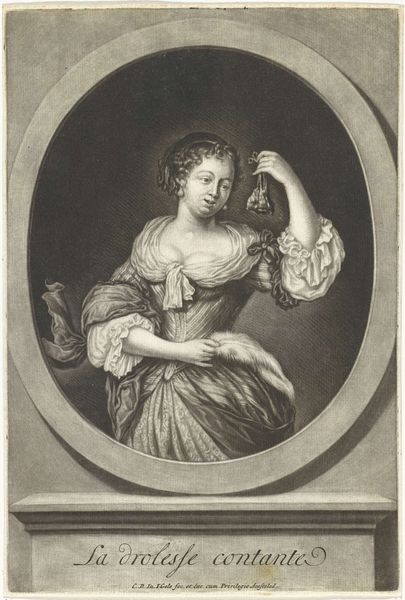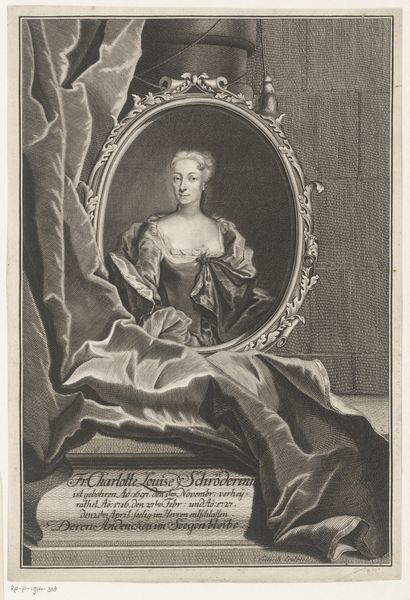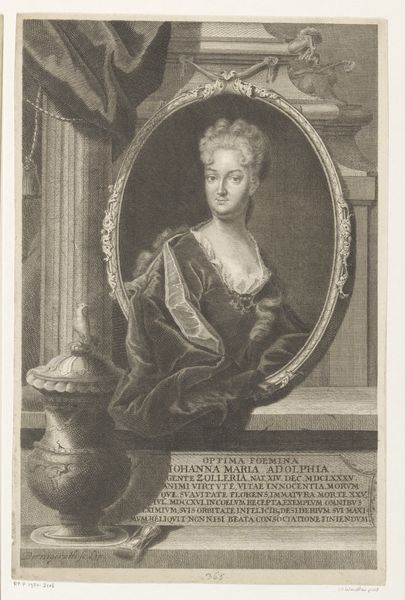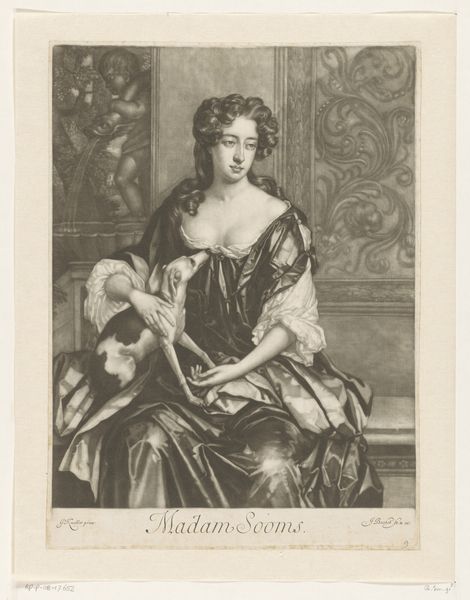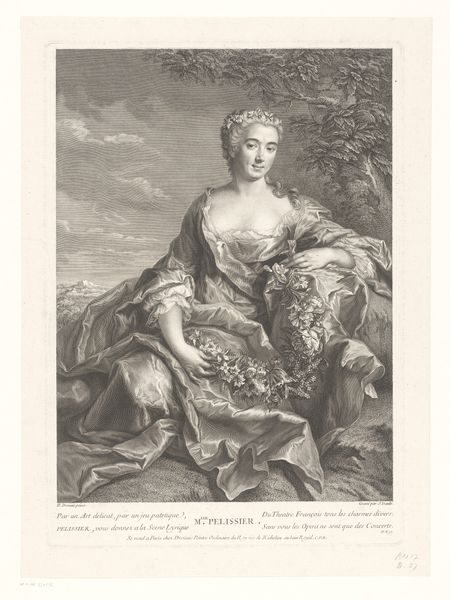
#
pencil drawn
#
aged paper
#
light pencil work
#
photo restoration
#
pencil sketch
#
old engraving style
#
personal sketchbook
#
historical photography
#
old-timey
#
pencil work
Dimensions: height 252 mm, width 193 mm
Copyright: Rijks Museum: Open Domain
Editor: Here we have "Singing Saint Cecilia," an engraving by Gaspard Duchange, created sometime between 1672 and 1757. It’s currently held at the Rijksmuseum. The image is predominantly grey scale on aged paper, giving it a rather solemn mood, don't you think? What's your initial take on this work? Curator: Indeed. There's a quiet reverence emanating, don’t you think? Cecilia, patron saint of music, forever caught in a moment of divine inspiration. Notice the Latin inscription – "I will sing to the Lord as long as I live" – a potent declaration of artistic and spiritual devotion. The flowing drapery and her upward gaze almost transport us. The delicate pencil work speaks of whispers, secrets of devotion transcribed on the page. Doesn’t the scene feel both deeply personal and profoundly public at once? Editor: It does, but it almost looks as if it might have been a pencil sketch? What makes this different from the sketches artists often make before the finished works? Curator: Ah, the perceived 'sketchiness' perhaps gives it an immediate feel, as if you’re peeking into the artist’s private contemplation. This is a finished print. Think of it as Duchange, almost choreographing devotion. How can we freeze emotion into mere lines? He seems to be asking himself this. The level of detail, especially on Cecilia’s face, suggests it was always intended as a finalized piece. Don’t you agree? Editor: I see what you mean! I guess it tricks the eye, looking so light and ephemeral, but actually being quite detailed. Thanks for pointing that out! Curator: My pleasure! I think it reminds us that even in meticulous detail, art can still breathe with the energy of its first inspiration.
Comments
No comments
Be the first to comment and join the conversation on the ultimate creative platform.
